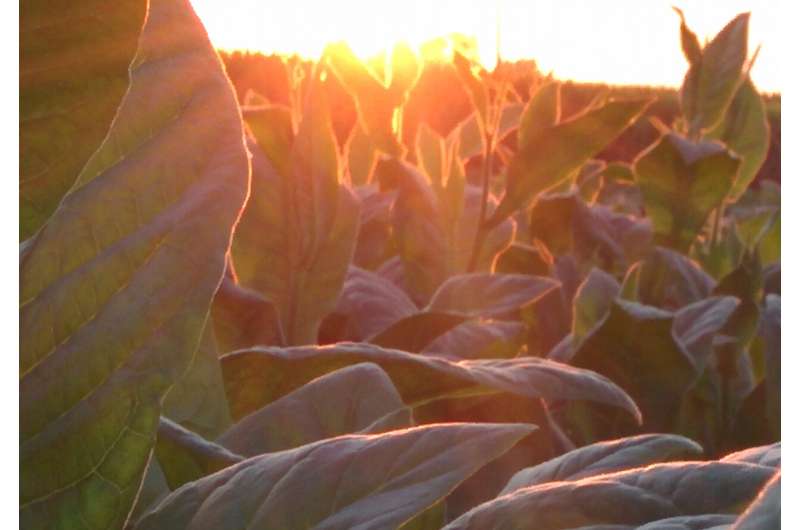This article has been reviewed according to Science X's editorial process and policies. Editors have highlighted the following attributes while ensuring the content's credibility:
fact-checked
peer-reviewed publication
trusted source
proofread
Researchers determine chloroplast size unlikely option for improving photosynthetic efficiency

A group of RIPE researchers have found, for the first time, that chloroplast size manipulations are unlikely to be an option for increasing crop photosynthetic efficiency. Their work was recently published in New Phytologist.
"Chloroplast size affects photosynthetic efficiency in multiple ways," said Katarzyna "Kasia" Glowacka, lead author and Assistant Professor in Biochemistry at the University of Nebraska-Lincoln. "Interestingly, we found that changes in chloroplast size had relatively small effects on photosynthesis."
Chloroplasts are the organelles within the cells of the leaf where photosynthesis occurs. Light energy is absorbed by the leaves' chlorophyll and used to reduce carbon dioxide to carbohydrate, and in turn feed all of the organic constituents of the plant. The team explored if chloroplast size manipulation can be a viable approach to improving photosynthetic performance by combining a broad range of techniques from confocal microscopy to field tests. Using synthetic biology, they produced tobacco lines with chloroplasts bigger and smaller than the size found in wild plants.
"There are many reasons why the size of chloroplasts might affect photosynthetic efficiency," said RIPE Director Stephen Long, Director of the Realizing Increased Photosynthetic Efficiency (RIPE) Project and Ikenberry Endowed University Chair of Crop Sciences and Plant Biology at Illinois' Carl R. Woese Institute for Genomic Biology. "Here, Kasia found ways to make plants with both larger and smaller chloroplasts and the work showed that chloroplast size manipulation appeared to not improve productivity under field conditions."
Results like those found by Glowacka and team are helpful in providing direction for RIPE researchers. They first put the chloroplast change into a model plant to get results quicker, before moving on to more complex food crops.
"These results suggest changing chloroplast size is unlikely to be profitable," said Glowacka, a former postdoctoral researcher in Long's lab. "Such research allows us to narrow down the many possibilities and focus effort where it will make the most impact."
More information: Katarzyna Głowacka et al, Is chloroplast size optimal for photosynthetic efficiency?, New Phytologist (2023). DOI: 10.1111/nph.19091
Journal information: New Phytologist
Provided by University of Illinois at Urbana-Champaign





















